Results 5,841 to 5,850 of 12094
Thread: Anandtech News
-
03-18-16, 06:01 PM #5841
Anandtech: Microsoft Extends Skylake Support On Windows 7 And Windows 8.1
Back in January, Microsoft made a rather surprising announcement that it was changing the support model for older operating systems running on the latest Skylake hardware. As part of the announcement, going forward, the latest processors and chipsets would only be supported on the current version of Windows. As of now, and for the foreseeable future, that means new chips will only be supported on Windows 10.
This was a surprise because both Windows 7 and Windows 8.1 are still in their “extended support” phase, and generally that means the operating system is left as is, but security updates are done until the end of extended support. For businesses especially, many had just finished their Windows 7 upgrade and there was not necessarily a big push to start over again. But at the same time, workstations need to be replaced. As a slight reprieve, Microsoft said in January that they would provide a list of computers that would have support for Skylake until July 2017. Since then, the list has been made available here: Skylake systems supported on Windows 7 and Windows 8.1 - Windows Help
There was some ambiguity about the initial notification though. After July 2017, patches that are found to cause an issue with Skylake systems would be excluded from certain security patches. But what that meant exactly wasn’t stated. Today Microsoft has both extended the diary date for the end of support, as well as provided a bit more clarity on what will happen after.
First, the new end of support for the listed computers is now July 17, 2018. That is a one-year extension over the initial date. The initial 2017 date was so short that I’m sure Microsoft got some not so friendly responses from their largest enterprise customers who are most certainly going to have Skylake systems running Windows 7. July 2018 should be enough time for actual planning and testing to be done.
Second, all critical patches will be addressed for Skylake systems until the end of mainstream support for the operating system, which is January 2020 for Windows 7, and January 2023 for Windows 8.1. This clears up the odd wording previously announced, and means that if you have to continue running Windows 7 on the approved machines after July 2018, you won’t be left vulnerable to a security issue that is already patches.
What is not changing is the stance on future hardware. When the latest AMD and Intel processors are released, they will only be supported on Windows 10. But at least this policy is laid out ahead of time, instead of them changing the policy half way through support. Pray they don’t alter it any further.
There’s a big difference between something capable of running Windows 7 and something that is supported running Windows 7, especially when you have critical infrastructure. Future hardware may run just fine on Windows 7 if you can put up with issues like Ian had installing Windows 7 on a new Skylake system when he was forced to use an optical disk. For business, they likely want to stick to the supported methods unless they have ambitious IT departments.
Source: TechNet Blog
More...
-
-
03-21-16, 01:35 PM #5843
Anandtech: Apple Announces The iPhone SE
Today's Apple launch event came with three major announcements. The first was the public release date of iOS 9.3, the second was the 9.7" iPad Pro, and the third was a successor to the 2013 iPhone 5s. Interestingly, this phone eschews the number from the name of its predecessor, presumably because we've moved two generations beyond the 5s already and will likely be seeing a 7 appear in the next iPhone's name. Instead, Apple has called it the iPhone SE.
The iPhone SE comes in at a time when the high end market has transitioned entirely to high end smartphones. Apple was most resistant to that trend, but eventually made their own larger screened devices, leaving the group of users who wanted a smaller device to opt for the aging iPhone 5s. With iOS becoming more resource intensive over time, and the iPhone 5s getting older, Apple needed to create a new 4" device if they wanted to continue offering one. Being able to offer it for a lower price than the larger models also helps with selling to new and emerging markets.
While the iPhone SE is a small phone, it is no slouch when it comes to specs, and the only aspect that is reminiscent of the iPhone 5s is the design of the chassis and the display. Almost everything else borrows from Apple's newest flagship smartphone, the iPhone 6s. You can check out the specs for the 5s, SE, and 6s in the chart below to see the similarities and differences between the three.
The iPhone SE is a substantial upgrade to the iPhone 5s. Starting with the internal hardware, we see that the SoC moves from the Apple A7 SoC to Apple A9. Going by Apple's numbers – which tend to be fairly reasonable in how well they correlate with actual performance results – the iPhone SE's CPU performance is roughly 2x higher than the iPhone 5s, and the GPU performance is roughly 2.85x higher. The amount of RAM has increased to 2GB as well, which is definitely needed with the increase in RAM pressure on iOS over the last few years.Apple iPhone Line Apple iPhone 5s Apple iPhone SE Apple iPhone 6s SoC Apple A7
2 x 1.3GHz Apple CycloneApple A9
2 x Apple TwisterGPU PowerVR GX6450 PowerVR GT7600 RAM 1GB LPDDR3 2GB LPDDR4 Display 4.0-inch 1136 x 640 IPS LCD 4.7-inch 1334 x 750 IPS LCD Size / Mass 123.8 x 58.6 x 7.6 mm, 112 grams 138.3 x 67.1 x 7.1 mm, 143 grams Camera Rear Facing
8MP iSight with 1.5µm pixels + True Tone Flash
Front Facing
1.2MP F/2.2Rear Facing 12MP iSight with 1.22µm pixels + True Tone Flash Front Facing 1.2MP f/2.4 Front Facing 5MP F/2.2 + Retina Flash Storage 16GB/32GB/64GB 16/64GB 16/64/128GB I/O Apple Lightning connector, 3.5mm headset WiFi 2.4/5GHz 1x1 802.11a/b/g/n, BT 4.2 2.4/5GHz 1x1 802.11a/b/g/n/ac, BT 4.2, NFC 2.4/5GHz 2x2 802.11a/b/g/n/ac, BT 4.2, NFC Price $449 16GB $399/499 16/64GB $649/749/849 16/64/128GB
On paper, the display is the same as the one used on the iPhone 5s. It's a 4" IPS display with a resolution of 1136x 640. It looks like the panel is the same as well, as it doesn't benefit from the improved contrast enabled by the use of photo alignment tech on the iPhone 6s.
The camera is greatly improved as well. Advances in sensor technology and image processing over the past two and a half years have allowed modern smartphones to greatly surpass what was possible with the camera on the iPhone 5s, and so the iPhone SE adopts the same 12MP sensor used in the iPhone 6s. This provides an increase in resolution, and the advancements that come with the A9 SoC's ISP will further improve image quality over the 5s through improved noise reduction, HDR, and tone mapping.
The new ISP and higher resolution sensor also allow for higher bitrate video recording with better image stabilization, as well as 30fps UHD video and 1080p120 slow motion video, which is an enormous improvement over the relatively low bitrate 720p120 clips from the 5s. Like the iPhone 6s and 6s Plus, the iPhone SE supports taking Apple's Live Photos which pair an MPEG video stream and a higher resolution still image. Since the SE doesn't have 3D Touch you interact with them using a long press in the same way that the iPad does
Connectivity on the iPhone SE improves as well. The 5s was still an 802.11n device even as some Android vendors were making an early move to 802.11ac. The SE brings 802.11ac support along for 433Mbps WiFi speeds, along with Category 4 LTE which enables downstream speeds of up to 150Mbps. This isn't on par with the Category 6 LTE in the iPhone 6s, but it's a significant improvement over the iPhone 5s.
The iPhone SE starts at $399 for a 16GB model, with the upgrade to 64GB bringing the price to $499. If you're still on a contract carrier in the US it will be free on a two year term. Orders will begin on March 24.
More...
-
03-21-16, 01:35 PM #5844
Anandtech: Apple Unveils The 9.7" iPad Pro
Today at their March launch event Apple unveiled the iPhone SE, confirmed the official public release of iOS 9.3, and announced their newest standard sized tablet. For a while it was expected that this new tablet would be the iPad Air 3, which would make it a natural successor to the iPad Air 2. However, Apple has taken a different path with this launch and has instead opted to position this new tablet between the iPad Air 2 and the 12.9" iPad Pro. The newest iPad is, somewhat confusingly, also called the iPad Pro, and I'll be referring it to the iPad Pro 9.7" in the same way that Apple differentiates their other products by the display size.
This new iPad Pro is a successor to the iPad Air 2 in some ways, but a new segment of the iPad line in others. For one, it doesn't replace the iPad Air 2 in Apple's product line, and it hasn't even affected its price. At $599, the 9.7" iPad Pro is really a shrunken down iPad Pro, and it even pulls ahead of the larger model in some respects. The chart below summarizes the specs of the iPad Air 2, iPad Pro 12.9" and the new iPad Pro 9.7".
Looking at the specs of the 9.7" iPad Pro makes it clear that it really is a smaller version of the 12.9" model, and a true upgrade over the iPad Air 2. Starting with the SoC, we see a move from the A8X SoC in the iPad Air 2 to the A9X SoC that debuted with the 12.9" iPad Pro. As of right now it's not clear what max CPU clock speed of the A9X in the iPad Pro 9.7" is, but Apple has historically shifted clock speeds down when moving chips into smaller devices, and it's likely that clocks have been moved down from the 2.26GHz speed of the 12.9" iPad Pro to maintain battery life and control the device's thermal profile. With the GPU we're looking at the same 12 cluster PowerVR Series7XT implementation, but it's again not clear whether Apple has targeted the same peak clock speeds.Apple iPad Air 2 Apple iPad Pro 9.7" Apple iPad Pro 12.9" SoC Apple A8X
3 x Apple Typhoon @ 1.5GHzApple A9X
2 x Apple TwisterApple A9X
2 x Apple Twister @ 2.26GHzGPU PowerVR 8 Cluster Series6XT PowerVR 12 Cluster Series7XT RAM 2GB LPDDR3 Unknown 4GB LPDDR4 NAND 16/64/128GB 32/128GB Display 9.7" 2048x1536 IPS LCD 12.9" 2732x2048 IPS LCD Gamut sRGB DCI-P3 sRGB Size and Mass 240 x 169.5 x 6.1mm
437g WiFi, 444g LTEUnknown 305.7 x 220.6 x 6.9 mm
713g WiFi, 723g LTECamera 8MP Rear-Facing, f/2.4, 1.1 micron
1.2MP Front-Facing, f/2.212MP Rear-Facing
5MP Front-Facing, f/2.28MP Rear-Facing, f/2.4, 1.1 micron
1.2MP Front-Facing, f/2.2Battery 27.3Wh Unknown 38.5Wh Launch OS iOS 8 iOS 9 Cellular Connectivity Category 4 LTE + GPS/GNSS in Cellular SKU Other Connectivity 2x2 802.11a/b/g/n/ac + BT 4.2, Apple Lightning, Smart Connector on iPad Pro SIM Optional NanoSIM Price $399
16GB$599/749/899
32/128GB/256GB$799/949/1079 32/128GB/128GB LTE
Currently the amount of RAM in the iPad Pro 9.7" is unknown. The rumor mill has been claiming that it's the same 4GB of LPDDR4 RAM that you get in the larger model, but this can't be confirmed until the device is in the hands of users and developers. I've already covered in the past how split screen multitasking on the iPad Air 2 could potentially bring you up against the limit imposed by having 2GB of RAM, and with the iPad Pro being a device that markets itself as being capable of actual productivity tasks it would make sense that Apple brought the 4GB of RAM to the smaller model. On the other hand, the 9.7" iPads don't have the strain of running two essentially full sized applications side by side, so I wouldn't want to make any predictions on what Apple has done here.
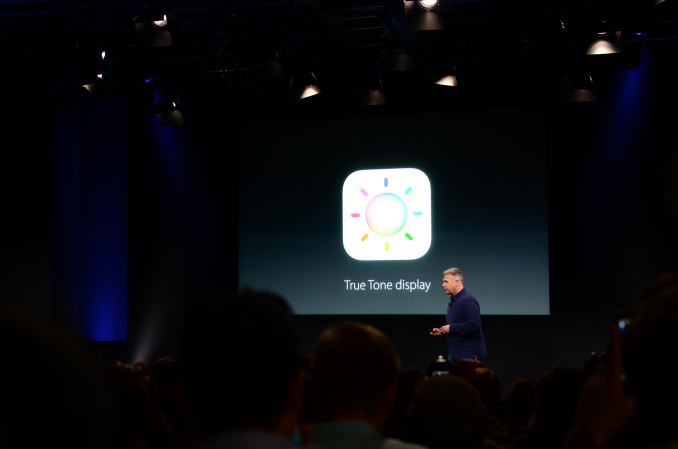
The display of the iPad Pro 9.7" has the same 2048x1536 resolution of the iPad Air 2. Due to the way iOS handles rendering I really don't expect we'll see any improvements in resolution on the iPad until it's viable to use 3072x2304 panels which would have a pixel density of 396ppi. Even though the resolution remains the same, the display itself is a newer generation panel that inherits the improved contrast and anti-reflective coating from the larger iPad Pro. The improved contrast is the result of Apple using photo alignment to create a more consistent orientation among the liquid crystals. The display's digitizer maintains the 120Hz scan rate from the iPad Air 2, and gains the improved 240Hz scan rate from the 12.9" iPad Pro when using Apple Pencil.
In addition to inheriting the advancements made with the 12.9" model's display, the 9.7" iPad Pro comes with some tricks of its own. The first is an improved color gamut. Like the new iMac 4K and 5K, the iPad Pro 9.7" adopts the DCI-P3 color gamut. I'm hoping that Apple has been secretly building color management into iOS in preparation for this, as there are going to be problems with oversaturation if they haven't. The 9.7" iPad Pro also improves luminance dramatically, with a peak brightness of 500 nits. Finally, there's a new feature which Apple is calling the True Tone display, which measures the ambient brightness and color temperature and adjust's the display to match.
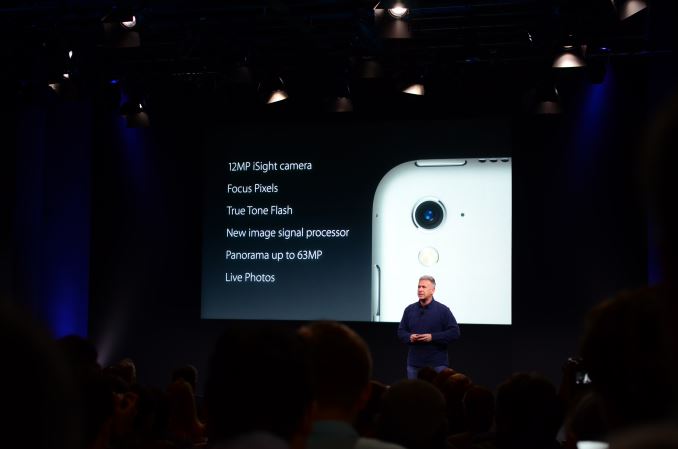
Something unique to the 9.7" iPad Pro is its camera. The 12.9" iPad Pro uses the same camera and lens stack from the iPad Air 2, which consists of an 8MP sensor with 1.1 micron pixels and a f/2.4 aperture. The 9.7" iPad Pro comes with a 12MP PDAF sensor, which may be the same as the one used on the iPhone 6s. Whether it is or isn't, it will provide a substantial upgrade over the camera shipping in the iPad Air 2 and iPad Pro, as those sensors are already a step behind the larger 8MP sensor used in the iPhone 6. The 12MP sensor enables 4K recording as well.
In all other respects, the 9.7" iPad Pro is the same as its larger sibling. It comes in 32GB and 128GB storage configurations, with an additional LTE-enabled model that only comes with 128GB of storage. It has the same 4 speaker configuration, and I'm interested to see how much space is taken internally by the speaking housing, as Apple is more constrained on space in the smaller chassis when balancing the battery capacity against speaker size. On the connectivity side we see that the WiFi is a 2x2 802.11ac implementation, along with Bluetooth 4.2 and Apple's smart connector for connecting accessories like the new smaller Smart Keyboard along with other keyboards that will be made by vendors like Logitech.
The 9.7" iPad Pro will be shipping on March 31. It comes in Rose Gold, which is unique to it among the iPads. It starts at $599 for the 32GB WiFi model, moving up to $749 for 128GB and $879 for 128GB + LTE. The Smart Keyboard carries the same $169 price as the version for the larger iPad Pro, and Apple Pencil hasn't changed at all so it's still an additional $99. With the iPad Air 2 starting at $399 for 16GB, the increased storage, accessory compatibility, improved display, and greatly improved performance of the iPad Pro 9.7" is definitely tempting, although if you aren't going to be using Apple Pencil you definitely have to consider if the $200 is worth it for you.
More...
-
03-21-16, 02:45 PM #5845
Anandtech: Hands On With the Apple 9.7 Inch iPad Pro
Over the past few months I’ve been able to spend some quality time with the iPad Pro and I’ve found that while the iPad Pro isn’t quite a computer replacement in the sense that you should toss your laptop out, but it is the first tablet that can actually justify itself relative to a phablet. With the 9.7” iPad Pro, Apple has been able to take the elements of the iPad Pro 13” that differentiated it from Android tablets and previous iterations of the iPad and fit it in a smaller form factor.
The main points of differentiation that make this device more than an iPad Air 3 include the Apple Pencil, Smart Keyboard, and speakers. The Apple Pencil behaves identically relative to the larger device, but the smaller display size makes it feel more cramped. Other than this, the feel of the tip on the glass is identical, as is the pressure sensitivity, tilt sensitivity, and latency.
The Smart Keyboard for this version of the iPad Pro is significantly smaller than the version for the 13” iPad Pro. Right away it felt like it was a lot less comfortable to type on this iteration of the iPad Pro as a result as I couldn’t just rely on sheer muscle memory to place my fingers in the right place every time. However with some practice I was able to keep a typing pace that was pretty much identical, although it was relatively easy to make mistakes relative to a laptop keyboard because the keys are smaller so there’s less tolerance for errors in finger placement. With practice, like a smartphone keyboard, I’m sure it’ll be possible to type as quickly as you would on a laptop but I wasn’t able to reach that level of practice over the course of the two or so minutes I could spend with the keyboard.
Other than the size issue, everything else feels basically identical to the larger iteration of the Smart Keyboard. Those that love mechanical keyboards for their travel and tactile feedback will probably be disappointed by the feel, but I tend to bottom out keys no matter what keyboard I’m typing on so to me the relatively shallow travel of the keys was not a problem when it came to typing at a respectable rate.
Of course, the speakers are also shared with the iPad Pro but in this case I wasn’t really able to test them properly as the hands on environment is rather chaotic and loud. I wouldn’t be surprised to know that the same speaker protection ICs are shared with the larger version of the iPad Pro for logistics reasons, but I wasn’t able to confirm that this is the case at the event. Similarly, the camera was not properly tested at the event as it wasn’t possible to do a proper comparison in the hands on environment.
The one other notable change that the 9.7” iPad Pro brings is True Tone display, which adjusts color temperature of the display based upon ambient light conditions. It turns out that this is something that you can toggle on and off on the fly, and the result that it produces seems to be designed to make the display more consistently neutral while other Apple mobile devices tend to end up with a colder white balance in most conditions. I didn’t see a toggle for color gamut, so it’s likely that the iPad Pro 9.7” is using either color management to enable a wider gamut on the fly or just displaying a wider color gamut all the time. To figure out which way Apple went here we’ll need to try a review unit, but given just how much emphasis Apple has placed on their displays I would be surprised if it’s the latter.
Other than these points of differentiation, the iPad Pro 9.7” pretty much feels like any other iPad. However, there are a few notable changes to the design, including a camera hump to handle the 12MP camera and replacing the large plastic RF window on the LTE variants with an external aluminum antenna and insulating plastic to separate it from the rest of the chassis. It’s appreciably lighter than the iPad Pro 13”, but feels pretty much identical to the iPad Air 2 in terms of size and weight.
Overall, if you liked the 13” iPad Pro but didn’t want to deal with the extra size or weight, it looks like this will be exactly what you’re looking for.
More...
-
03-21-16, 02:45 PM #5846
Anandtech: Apple Releases iOS 9.3
Along with the iPhone SE and 9.7" iPad Pro, today's Apple event came with an official release of iOS 9.3. iOS 9.3 has been in beta for quite some time now, with there being both a developer and a consumer beta stream. While 9.3 isn't a major point release, it is significantly larger than most of the minor iOS updates that are released, with there being both new features and bug fixes included.
For many users the most significant feature in iOS 9.3 is Night Shift. For anyone who uses or has has heard of f.lux, Night Shift is basically Apple's version of the same thing for iOS. It alters the white balance of your display to reduce the blue component of luminance. There have been various studies on the negative effects of exposure to blue shifted lighting on a person's ability to sleep, and with iOS devices generally having slightly blue shifted white points this can pose a genuine issue for users reading on their iPhone or iPad before going to bed.
Night Shift has a few options. You can forcibly enable or disable it from the settings app or from Control Center, and you can also set it to enable on a schedule. There's also a slider that controls how far the white point is shifted toward red, with the warmest setting being about as far as you can go without disrupting usability.
Another notable iOS 9.3 feature is support for Touch ID in the Notes application. With the Notes app seeing more use and potentially storing more sensitive data after the release of the iPad Pro, being able to protect the content inside using Touch ID is a useful feature to have.
The Health app sees some changes as well. It now integrates deeper with the Activity application that gathers data from the Apple Watch, and includes a new dashboard pane that summarizes your exercise info from the Activity app. Previously the Health app would simply pull information from the Activity app and populate its own data sections, and better integration of the two apps is probably overdue. Apple has also added sliders in certain sections that can reveal featured apps that integrate and aggregate data in the Health app.
For iPhone 6s and 6s Plus users, iOS 9.3 adds 3D Touch support from the home screen for a few additional applications, including Weather, App Store, Health, Compass, Settings, and Stocks. 3D Touch support for Weather is a nice addition, and I was surprised by the omission when the 6s first launched.
iOS 9.3 will be coming to compatible iOS devices today. It will be supported on all devices that support iOS 9, which includes all iPads from the iPad 2 onward, and all iPhones from the iPhone 4s onward.
More...
-
03-21-16, 03:39 PM #5847
Anandtech: Hands On With the Apple iPhone SE
It’s probably not a secret at this point that a number of people were disappointed when Apple seemed to move away from the 4” form factor with the iPhone 6. It turns out that there’s a sizeable market for a smaller iPhone, so rather than letting the 4” size die away quietly Apple has introduced the 4” iPhone SE for those that want a smaller iPhone without having to buy something that is relatively out of date.
In the hand, the iPhone SE basically feels identical to the iPhone 5s. The design is pretty much the same with its lack of camera hump and sharp lines, but rather than polished chamfered edges Apple has elected to keep the chamfer sand-blasted matte. The weight of the phone is also noticeably less than the iPhone 6 or iPhone 6s, which is due to the lack of 3D Touch and the smaller size of the device. The display also looks to be quite similar to the iPhone 5s.
Other than this, I don’t really have a lot to say because it feels almost exactly like an iPhone 6s otherwise. As a heavy 3D Touch user, the lack of 3D Touch is noticeable, especially when playing back Live Photos. But other than that performance is similarly fast and I didn’t see any obvious problems, however many of these under the hood changes are going to be quite difficult to notice in the space of a few minutes as they’re quite subtle.
Although not quite in the realm of a hands-on, the main area of note here is the price as Apple has basically released a cheaper version of the iPhone 6s in a smaller size. In developing countries it seems that the cheaper iPhones are often the most popular, so it’s interesting to see how Apple has effectively upped the value of this version of the iPhone in a very big way. To get close to the 399 USD price point of the new iPhone SE, previously you had to get a phone 2 generations old with a relatively outdated SoC, so it’s impressive to see that now for the same price you can get something that has the latest and greatest in almost every way save for modem and size.
It’s also worth noting that Apple is basically completely uncontested in this part of the market. Although there are a lot of budget phones out there using 4" screens to hit their respective price point, Apple seems to be the only OEM still playing in the 4” display size space for high-end phones. There are a few Android OEMs trying to keep phones at the 4.5-4.7” segment (i.e. iPhone 6s size) with similarly high-end specs, but no Android OEM is trying to sell a 4” phone with high-end hardware. It’ll be interesting to see what kind of effects this has on sales, although I’m not entirely sure that Android OEMs are going to be following Apple’s lead here as a smaller device makes battery efficiency more critical due to scaling effects.
More...
-
03-22-16, 08:27 AM #5848
Anandtech: NVIDIA Announces 24GB Quadro M6000
With NVIDIA currently between GPU generations, things have been relatively quiet on the professional graphics front for the company. On the high-end NVIDIA released the Quadro M6000 back in 2015, bringing their fully enabled GM200 GPU into the professional market. Now just over a year later, they are giving the Quadro a refresh with a newer, higher capacity model.
When the original Quadro M6000 was launched, NVIDIA outfitted it with 12GB of VRAM in a 24x4Gb configuration, a large amount of memory for the time but not the full amount a GM200 card could be equipped with. Now this week the company is giving the card mid-cycle upgrade by increasing its VRAM capacity, replacing the 12GB model with a 24GB model utilizing higher density 8GB GDDR5 memory chips.NVIDIA Quadro Specification Comparison M6000 (24GB) M6000 (12GB) K6000 6000 CUDA Cores 3072 3072 2880 448 Texture Units 192 192 240 56 ROPs 96 96 48 48 Core Clock N/A N/A 900MHz 574MHz Boost Clock ~1140MHz ~1140MHz N/A N/A Memory Clock 6.6Gbps GDDR5 6.6Gbps GDDR5 6Gbps GDDR5 3Gbps GDDR5 Memory Bus Width 384-bit 384-bit 384-bit 384-bit VRAM 24GB 12GB 12GB 6GB FP64 1/32 FP32 1/32 FP32 1/3 FP32 1/2 FP32 TDP 250W 250W 225W 204W GPU GM200 GM200 GK110 GF110 Architecture Maxwell 2 Maxwell 2 Kepler Fermi Transistor Count 8B 8B 7.1B 3B Manufacturing Process TSMC 28nm TSMC 28nm TSMC 28nm TSMC 40nm Launch Date 03/22/2016 03/19/2015 07/23/2013 N/A Launch Price (MSRP) $5000 $5000 $5000 $5000
The target market for the 24GB M6000 is relatively straightforward: certain segments of the professional visualization market need all of the VRAM they can get, so for NVIDIA ecosystem users this should be a welcome upgrade. At the same time since 8Gb GDDR5 has been on the market for some time now, I’m surprised it has taken NVIDIA this long to bring GM200 to its maximum 24GB capacity. None the less this does give NVIDIA bragging rights as the highest capacity professional graphics card – surpassing the 16GB FirePro W9100 – though it’s worth noting that AMD should have the capability to push that to 32GB if they want final bragging rights.
Meanwhile NVIDIA’s press materials also briefly note that the updated Quadro M6000 ships with some new temperature & clockspeed management options – presumably via a newer firmware – though details are limited. The new M6000 features "More discrete GPU clock options for a better customer experience when running their application" and "Greater software temperature control to keep the GPU temperature below the hardware slowdown threshold for the best user experience.” NVIDIA’s professional cards (Quadro & Tesla) feature more performance controls than we see on consumer cards (which just run as fast as they can) and from the description I expect that NVIDIA has put in some new, finer grained options to better control automatic throttling behavior by manually setting both the maximum clockspeed and temperature. For single card workstations this is rarely an issue, but for large arrays of cards (e.g. Quadro VCA), keeping all of the cards in lockstep with regards to performance is a desired feature.
Finally, since this is a mid-cycle refresh, the new 24GB Quadro M6000 will be launching this week. It will be a drop-in replacement in NVIDIA’s product stack, and will occupy the previous M6000’s spot at $5000.
More...
-
03-22-16, 08:27 AM #5849
Anandtech: Samsung Demos Its First BGA SSD: 1500 MB/s Read Speed and Tiny Package
In the recent years SSDs in M.2 form-factor have greatly reduced the amount of space required for storage sub-systems inside modern PCs. However, as computers get even smaller, there is pressure for SSDs to further shrink as well. Solid-state drives in BGA packaging are considerably smaller than SSDs in M.2 form-factor and for a couple of years platform developers like Intel have been promoting such drives among PC makers. Intel said in 2014 that an M.2-2260 SSD could take 15% of space inside a 2-in-1 hybrid PC, whereas usage of a BGA SSD could save a great amount of space and could allow to increase battery size by around 10%. Moreover, in many cases usage of BGA storage can shrink Z-height of devices as well as improve thermal performance compared to M.2 modules, according to Intel.
As a result, the market for BGA form factor SSDs has been growing in size and importance at a quick pace. To that end, at the 2016 Samsung SSD Forum Japan, Samsung demonstrated its first SSD in a BGA (ball-grid array) packaging. Despite of tiny form-factor, Samsung’s PM971 SSD offers rather high performance thanks to PCIe interface and a special controller. Meanwhile the little drive will be targetted for use inside PCs, tablets, 2-in-1s and other types of small computers or embedded applications.
First BGA SSD From Samsung
Samsung’s PM971 SSD is based on Samsung’s new Photon controller as well as MLC V-NAND flash memory. It is impossible to say at this time whether the Photon controller of the PM971 SSD has anything to do with the controller used inside the 750 EVO drives (the controller is smaller than usual as it has only two processing cores), but it looks very likely.
Samsung plans to offer three versions of the SSD, featuring 128 GB, 256 GB, and 512 GB capacities. The PM971 SSD supports sequential read speed of up to 1500 MB/s as well as sequential write speed of up to 600 MB/s, suggesting that it relies on PCIe 3.0 interface. The PM971 SSD can perform 190K random read IOPS as well as up to 150K random write IOPS, according to information disclosed by Samsung.
At the event, Samsung did not reveal anything about internal architecture of its BGA SSD, which is rather interesting because the NAND controller has to extract maximum performance out of a limited number of NAND devices over a limited number of channels (provided, of course, that internal architecture relies on industry standards). Moreover, it is unknown whether the drive is compatible with the proposed M.2 specification for BGA SSDs. The only thing that is known about the SSD right now is that it is smaller than an SD card, according to PC Watch web-site.
Samsung is aiming for tablets and 2-in-1 hybrid PCs with its BGA SSDs, The company expects device manufacturers to adopt the product in the second half of 2016 or in the first half of 2017.
Standards for BGA SSDs Proposed
While we're on the subject of BGA SSDs, this is a good time to touch upon the recent developments in the standardization of SSDs in this format. Even with the recent growth of the market, SSDs in BGA packaging are not something completely new. Intel, Toshiba, SanDisk, Microsemi, Silicon Motion and some others have all offered SSDs in BGA form-factors for years to various makers of embedded applications, whom in turn needed to save space or run their storage sub-systems in harsh environments. Early last year Toshiba rolled-out its first BGA SSDs with PCIe interface, and in September several members of PCI SIG (the organization, which develops PCIe interface, its derivatives and standards for PCIe-based devices) proposed a set of mechanical standards for BGA SSDs, which could open the doors for many manufacturers to enter the emerging market.
BGA SSDs with PCIe 3.0 or SATA interfaces will be a part of the PCI SIG’s M.2 specifications. At present select members of the organization (HP, Intel, Lenovo, Micron, SanDisk, Seagate and Toshiba) propose four types of soldered-down solid-state storage solutions: Type 1620, Type 2024, Type 2228 and Type 2828. M.2 types traditionally define width and length of the package in millimeters, so, the smallest BGA SSD will have measurements of 16 × 20 mm, whereas the largest BGA SSD will feature 28 × 28 mm packaging. SSDs in a BGA package may have Z-height up to 2 mm (measured with solder balls collapsed), but may be slimmer.
BGA SSDs that comply with the proposed M.2 types use the same signals as the M.2 socket 3 (so, they are compliant with both PCIe 3.0 and SATA 3.2 protocols and can utilize up to four PCIe lanes), but use 1.2V, 1.8V and 3.3V power rails. All the BGA SSDs contain the common core ball map of Type 1620 (which look pretty much the same as the core ball map of Toshiba’s BG-series SSDs) for data and power, but the larger drives also feature additional mechanical retention balls. Some BGA SSDs can be placed on M.2 modules in a bid to enable design flexibility for device makers (and upgradeability option for end-users), but only on the condition that the modules have voltage conversion circuitry to provide 1.8V or 1.2V as required.
A BGA SSD not only integrates NAND flash memory, but also a NAND controller, DRAM and all the things that could be needed for a fully-functional solid-state storage solution. From the software perspective, M.2 spec BGA SSDs are just solid-state drives with PCIe or SATA interfaces. And unlike MCPs (multi-chip packages) consisting of DRAM and NAND that companies like Micron and Samsung offer to makers of mobile devices, BGA SSDs are complete storage systems that can be attached directly to appropriate host interfaces.
The proposed BGA M.2 form-factors intend to unify packaging of single-chip SSDs and make such SSDs industry-standard devices available from various makers. It is unknown at this time whether Samsung’s PM971 will be compliant with the proposed specs, but it's worth noting that the company is a member of PCI SIG and typically makes products in standard packages and form factors.
More...
-
03-22-16, 11:01 AM #5850
Anandtech: Andrew S. Grove, Former CEO and Chairman of Intel, Passes Away Aged 79
It is our sad news today to extend a report that Andy Grove, a Silicon Valley pioneer and the former CEO and chairman of Intel, passed away aged 79. Mr. Grove jointed Intel the day it was incorporated in 1968 and left active roles at the company in late 2004. Andy Grove played a critical role in Intel’s decision to refocus from computer memory to microprocessors in the eighties. He was also behind Intel’s transformation into a widely recognized consumer brand.
Born to a middle-class Jewish family in Budapest, Hungary, his family immigrated to the U.S. when he was 21, having survived Nazi occupation and escaping Soviet repressions. In the U.S. he studied chemical engineering at the City College of New York and then completed his Ph.D. at the University of California at Berkeley in 1963. Andy started his industry career at Fairchild Semiconductor, a pioneer in the manufacturing of integrated circuits, where Gordon Moore hired him as a researcher. By 1967, he became assistant head of R&D. At Fairchild, Mr. Grove developed a variety of integrated circuits and worked with such legendary engineers as Robert Noyce, Jerry Sanders and many others.
When Intel was founded in 1968, Andy was Intel’s third employee and started as the director of engineering, getting Intel’s manufacturing operations off the ground. Over the course of his career at Intel, Andy wrote several textbooks on the topics of semiconductors and management, some being used at a university level, as well as over forty technical papers and holds several patents. In 1979 Andy was Intel’s President, being made CEO in 1987, overseeing a growth in revenue to $20.8 billion at the time. In 1997 he became Intel’s Chairman, relinquishing his role as CEO in 1998 and continuing on the board until 2004 while working as a senior advisor to Intel and a lecturer at Stanford. He was Time magazine’s Man of the Year in 1997.
During his tenure as the chief executive, he made two important business decisions for the history of Intel. Firstly, he started to withdraw from the market of DRAM in the eighties because of heavy competition from Japanese makers. While Intel was larger than its rivals, it could not compete against all of them and instead of trying to pick an important market segment, it was decided that this was a moment for the company to refocus its business in general. Eventually, he described the process and decisions behind it in his book “Only the Paranoid Survive.” Secondly, he initiated massive CPU-related ad campaigns for consumers, which led to the Intel Inside brand to make the importance of microprocessor technology evident to the mainstream public. The decision to advertise CPUs beyond the pre-installed systems led to transformations of the semiconductor industry and to a degree helped expand the DIY PC market we know today. This led to Intel responsible for everything related to its CPUs. Thus when in 1994 it was discovered that the original Pentium processor had a fundamental bug in its FPU, the company replaced processors and organized the whole replacement scheme itself, which cost millions of dollars. Nonetheless, the company solved all the issues with the original Pentium chip under Mr. Grove's tenure.
During Andy’s time at Intel, being a staunch advocate of open and honest debate and direct lines of communication to senior management, he oversaw a large portion of the super-fast growth in personal computing through the 1980s, 1990s and into the new century. It’s clear how much his work has had an effect on the computing industry and here at AnandTech. Anand started the website as a hobby back in 1997, the same year Andy became Chairman, and since then we’ve always been enthusiastic about the progression of personal computing as well as the enterprise segment, areas which Andy and Intel have steered into something completely unimaginable over 40 years ago.
The legacy of Mr. Grove will carry on, both as a brilliant pioneer of the semiconductor age but also in the components and devices we use. While not a household name like Moore, Jobs or Gates, Grove stands among them (with Dennis Richie) in the annals of computing.We stand on the shoulders of giants in our work--none bigger than Andy Grove (1936-2016). You'll be greatly missed. https://t.co/5cxDY92Ah5— Brian Krzanich (@bkrunner) March 22, 2016RIP Andy Grove. The best company builder Silicon Valley has ever seen, and likely will ever see.— Marc Andreessen (@pmarca) March 22, 2016Andy Grove was one of the giants of the technology world. He loved our country and epitomized America at its best. Rest in peace.— Tim Cook (@tim_cook) March 22, 2016
More...
Thread Information
Users Browsing this Thread
There are currently 14 users browsing this thread. (0 members and 14 guests)




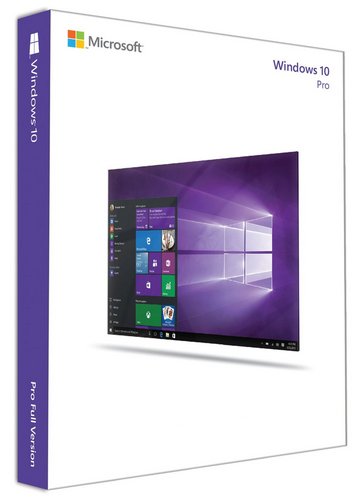

 Quote
Quote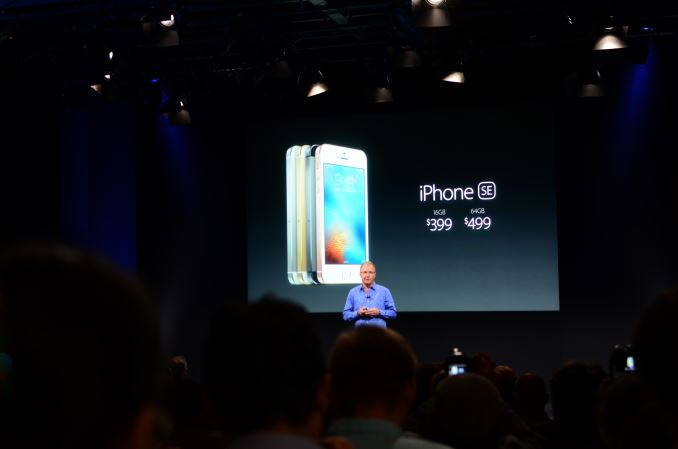

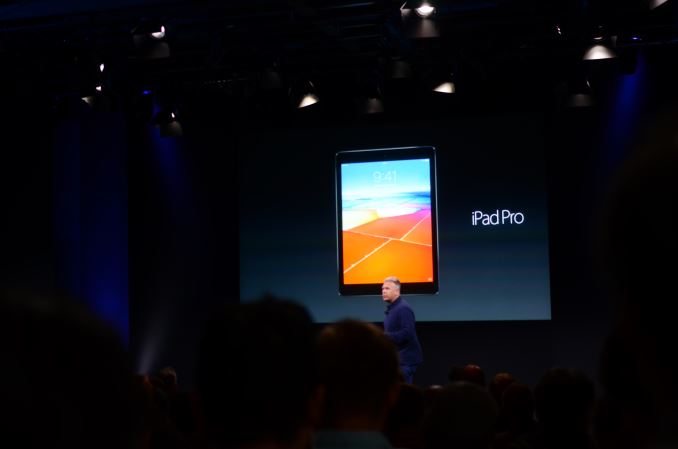
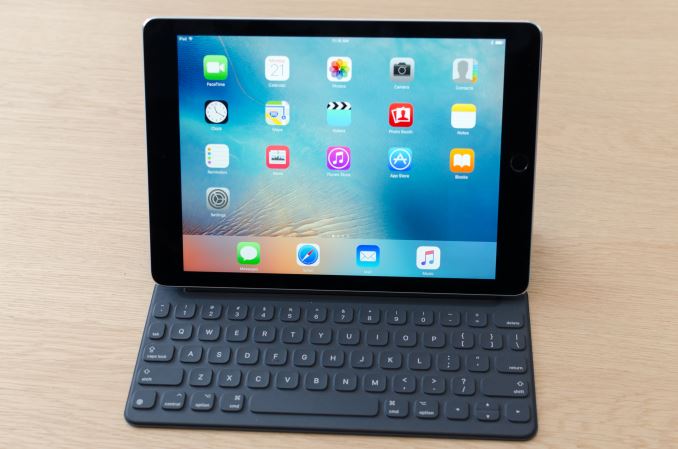
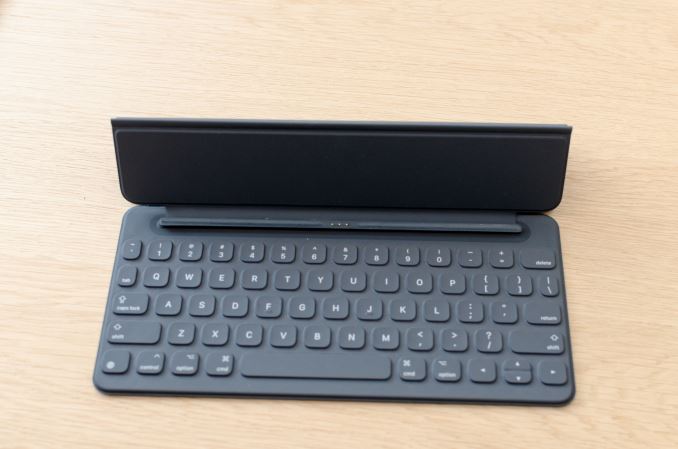
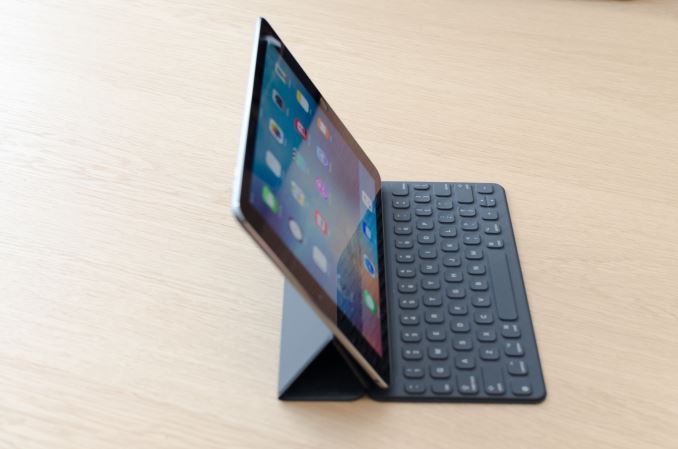


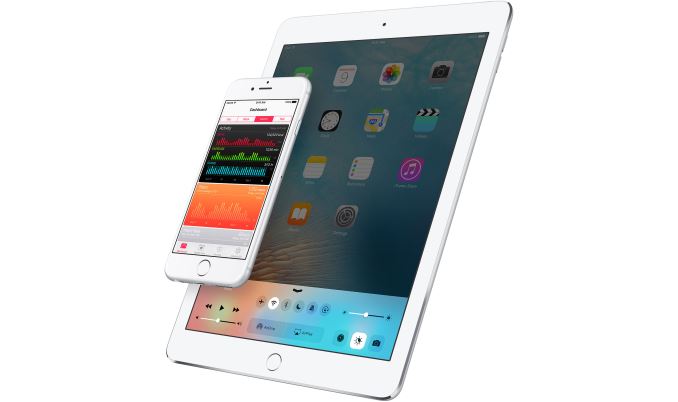
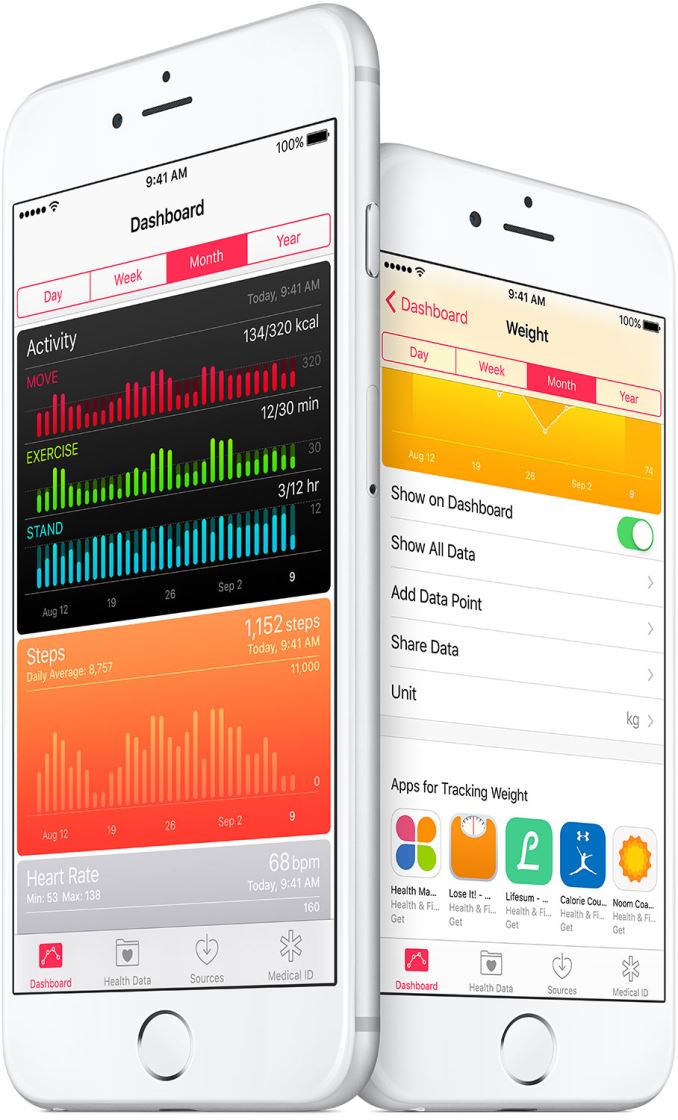
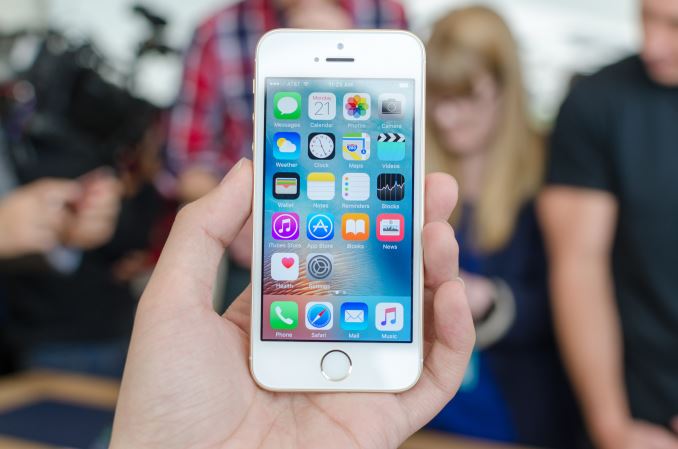






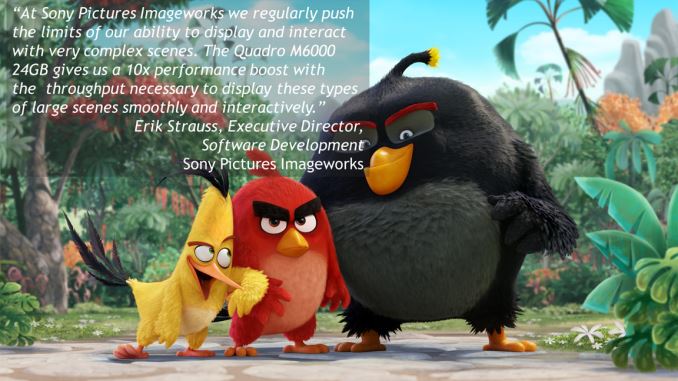
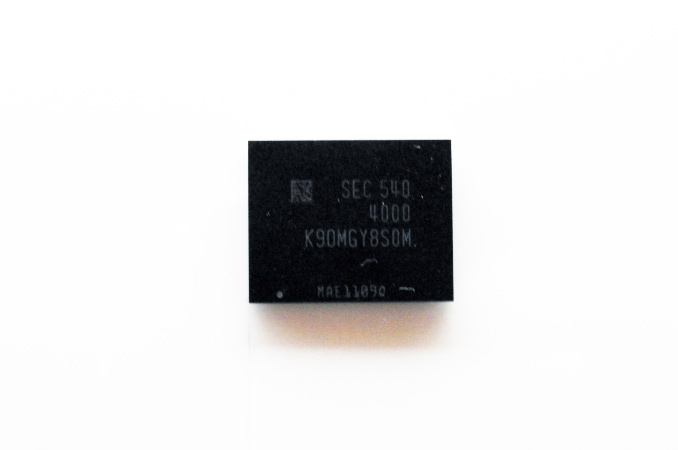


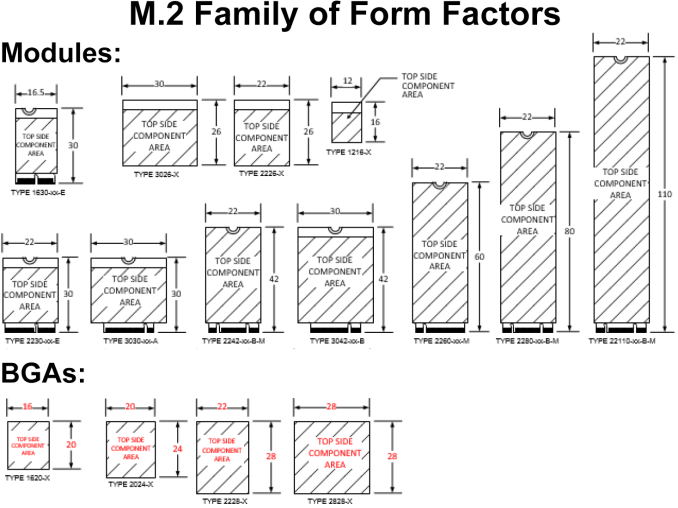

















Bookmarks